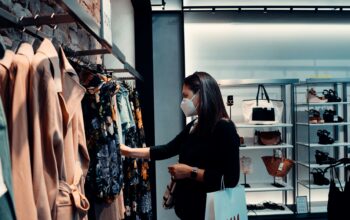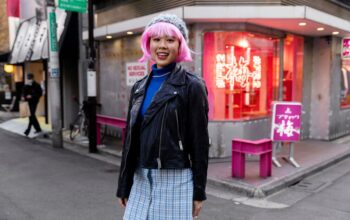Uzone.id – Sustainable fashion practices are a movement that prioritizes environmental and humanitarian values. This step is taken so that fashion in any form, from lifestyle to business, can minimize losses as much as possible.
The goal of sustainable fashion is to unite various sectors in the fashion industry, including designers, manufacturers, distributors, and consumers, to collaborate in changing the process of how a fashion item is sourced, produced, and consumed towards a better direction.
However, fundamentally, there is no fashion that is 100 percent sustainable. Why is that? Simply put, owning clothes means that users have to wash them. Unfortunately, most of the clothes available in the market are made from plastic-based materials.
This means that when washing microfiber clothing, fibers come loose and contaminate the water. Then, these microfiber plastics will continue to flow until they end up in rivers and oceans. All of this circulation ultimately endangers the ecosystems within, including humans.
Nevertheless, although we cannot completely eliminate these issues, through the practice of sustainable fashion, we can reduce the negative impacts of the fashion industry.
The dark side of the fashion industry

In the past, fashion designers from renowned fashion houses only designed clothing for four seasons. After the rise of fast fashion practices, there is now almost a new trend hanging in fashion stores every month.
As a result, these processes and practices are slowly starting to harm the environment, ecosystems, and communities. The modern linear manufacturing system for fast fashion puts pressure on non-renewable resources, pollutes water, generates massive amounts of waste, and most production defects will end up in landfills.
Industrial methods and materials are also the culprits behind environmental pollution. The use of fossil fuels that produce carbon dioxide greatly contributes to global warming due to their heat-trapping nature in parts of the atmosphere.
Not only that, but the dyeing and finishing processes that use chemicals also directly affect the health of the workers. The liquid waste that is disposed of will damage the soil, and if dumped into rivers, it will poison the water.
The fashion industry is starting to move towards sustainability practices
Since last year, the government has begun to encourage fashion companies operating in their country to be more transparent. The European Union’s Eco-Friendly Design Regulation for Sustainable Products (ESPR), which will take effect on July 18, 2024, has changed the way fashion companies manage unsold inventory.
Starting this year, large fashion companies will be required to disclose data on how much of their product is unsold, as well as how they plan to address it.This is because under the new regulations, companies will be prohibited from destroying unsold textiles and footwear. Companies will also be banned from burning their unsold textile products.
Sustainable fashion that will be a trend

Regenerative agriculture
Regenerative agriculture will be one of the trends in sustainable fashion practices. You might be confused about what the connection is between agriculture and the fashion industry. So, this approach will prioritize soil health, biodiversity, and carbon sequestration.
Unlike conventional agriculture, regenerative practices restore ecosystems. This practice helps to rebuild degraded soil and reduce greenhouse gas emissions. This shift has significant implications for fashion, particularly for natural fibers such as cotton, wool, and hemp.
As a result, many major brands are starting to invest in supporting regenerative agriculture. This is because, by providing support, brands can access stronger materials, more durable fibers, and of course reduce environmental impact.
For example, lab-grown cotton is emerging as a low-impact alternative to conventional cotton, eliminating the need for water-intensive farming and harmful pesticides.
Digital product development
Embracing technology is one way to support sustainable fashion practices. Through digital product development (DPD), fashion brands can create, test, and refine clothing virtually.
The application of such technology not only saves the production process by reducing the amount of fabric, water, and other resources needed but also minimizes material waste. Designers also do not need to create physical prototypes multiple times, reducing the likelihood of items being returned due to unsatisfactory results.
In addition, designers can also produce according to the client’s request. Instead of mass-producing based on estimates, brands can create small batches tailored to specific customer preferences. Furthermore, on-demand models allow for customization, providing consumers with a more personalized experience.
















